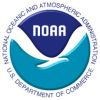   |
||||||||||||||||||||||||||||||||||||||||||||||||||||||||||||||||||||||||||||||||||||||||||||||||||||||||||||
| Home | Daily Log | About the Research | Images and Video | Maps | Data | Q&A | Links | ||||||||||||||||||||||||||||||||||||||||||||||||||||||||||||||||||||||||||||||||||||||||||||||||||||||||||||

Bering Sea-Ice Edge Expedition Data - Seabird and Cetacean Observations |
||||||||||||||||||||||||||||||||||||||||||||||||||||||||||||||||||||||||||||||||||||||||||||||||||||||||||||
Seabird and Cetacean Observations During the Sea Ice 2006 Cruise, onboard the NOAA RV Miller Freeman (22 – 27 April, 2006)George L. Hunt, Jr. & K. David Hyrenbach
As part of coordinated FOCI - RACE sea-ice operations, we
censused marine bird and cetacean distributions in conjunction with acoustic
surveys of the marginal ice zone.
One of us (KDH) surveyed marine birds and cetaceans from the bridge of
the RV Miller Freeman, eye height of 10 m above the sea surface, during
daylight hours while the vessel was underway. The observer scanned the water ahead of
the ship using hand-held 8X binoculars, and recorded all birds sighted within a
300-m arc, extending from the bow to the beam (90 degrees) on the side of the
track with better visibility (e.g., lower glare). We assigned each bird a behavioral code
(flying with a specific direction, sitting on the water, feeding, following the
ship, sitting on ice), and only recorded ship-following individuals when first
encountered. We also noted the
number, behavior, and radial distance to any cetacean we encountered, as well
as the weather conditions (
We surveyed a total of 453 km of track-line during four
survey days (April 22, 23, 24, 27).
We recorded a total of 2,277 seabirds, and identified 2,093 (91.9 %)
belonging to 13 different species (Table 1). Six “common” species
together accounted for over 98 % of all the identified birds: the Black-legged
Kittiwake (33.2 %), the Thick-billed Murre (20.6 %), the Glaucous-winged Gull
(19.3 %), the Northern Fulmar (17.3 %), the Glaucous Gull (5.6 %), and the
Common Murre (2.1 %). These
locally-breeding species largely forage on fish, even though they also consume euphausiids
and medusae. Zooplankton-feeding
seabirds were largely absent; with very low numbers of Parakeet Auklets (0.4 %),
a generalist feeder known to consume euphausiids and larval fish. We also encountered several rare species
during our survey. Most notably, we
documented the occurrence of a Siberian (Vega Gull) and an Arctic (Ivory Gull)
species in the
We also recorded 10 cetaceans during this cruise, and identified 6 (60 %) to species level (Table 2). We
documented three baleen (Humpback Whale, Minke Whale, Grey Whale) and one
toothed (Killer Whale) cetacean species in the marginal ice zone. In spite of their widespread occurrence
in the
sea ice zone by the RV Miller Freeman (April 22 - 27, 2006).
Table 2. Cetacean observations during acoustic surveys along the marginal sea ice zone by the RV Miller Freeman (April 22 - 27, 2006).
|
||||||||||||||||||||||||||||||||||||||||||||||||||||||||||||||||||||||||||||||||||||||||||||||||||||||||||||
| Privacy | Disclaimer | Accessibility | Contact Us |